Do you have an affinity for houseplants, but can’t get enough of the outdoors? If so, lucky bamboo might just be the perfect combination for you! Lucky bamboo—also known as Dracaena sanderiana or ribbon plant—is a wonderful houseplant that can bring luck and good fortune to your home. But did you know that it isn’t limited to indoor space? You may be wondering if lucky bamboo is suitable to plant outside in your garden or yard. In this blog post, we’ll answer that question and explore what different kinds of care and precautions need to be taken when growing this special greenery outdoors. So keep reading to find out more about how lucky bamboo fares in various outdoor environments!
Lucky Bamboo
Lucky Bamboo, despite its common name, is not actually a bamboo plant at all. It belongs to the Asparagaceae family and originally hails from the rainforests of West and Central Africa. [1] It’s also known as Dracaena sanderiana, named after the German-English gardener, Henry Frederick Conrad Sander.
Over the centuries, the plant has found its way out of the African rainforest and into homes and offices around the world, largely due to its adaptability and low maintenance needs. It can tolerate a range of light conditions, and it doesn’t even require soil – it can grow in water with just a few pebbles for support, making it a versatile plant for indoor or outdoor decoration.
Cultivating Lucky Bamboo outside its native rainforest habitat requires some attention to simulate its natural environment as closely as possible. It prefers a warm climate, plenty of water, and indirect light. Hence, the appropriate care for outdoor planting would depend on the specific climate and conditions of your garden or yard. In the next section, we will discuss some effective strategies for growing Lucky Bamboo outdoors.
Characteristics & Types
Lucky Bamboo is characterized by its slender, flexible stalks and vibrant green leaves. It’s a hardy plant that can tolerate a range of conditions, but it thrives best in a warm, humid environment with indirect sunlight.
There are several types of Lucky Bamboo, each with distinct characteristics:
- Straight Stalk: This is the most common type seen in stores. It features upright, straight stalks that can grow several feet high.
- Spiral Stalk: Opposite to the straight stalk, this type has stalks that curl into unique spirals. This form is achieved through careful manipulation and rotation of the plant in relation to light exposure.
- Tiered Towers: This type showcases arranged stalks in multiple tiers, often in a spiral or straight pattern. The number of tiers usually carries symbolic significance.
- Heart Style: This type of Lucky Bamboo is manipulated to grow into a shape that resembles a heart, making it a popular gift for loved ones.
- Braided Style: In this form, several stalks are twisted together while they’re young and flexible, resulting in an intricately braided pattern as they grow.
Popularity of Lucky Bamboo as an outdoor decoration
Lucky Bamboo has surged in popularity as an outdoor decoration, not just for its aesthetic appeal, but also for its deep cultural and symbolic significance. It’s often found in gardens, patios, and balconies, adding a touch of greenery with its vibrant leaves and stalks. The ease of maintenance, coupled with its hardiness and ability to withstand different weather conditions, further bolsters its popularity.
In Feng Shui, it’s believed to bring positive energy, prosperity, and good luck, making it a popular choice for outdoor spaces where it can attract favorable energies. Additionally, the different types of Lucky Bamboo, with their unique shapes and patterns, offer versatility in landscaping and design options, allowing them to complement a wide range of outdoor décor styles.
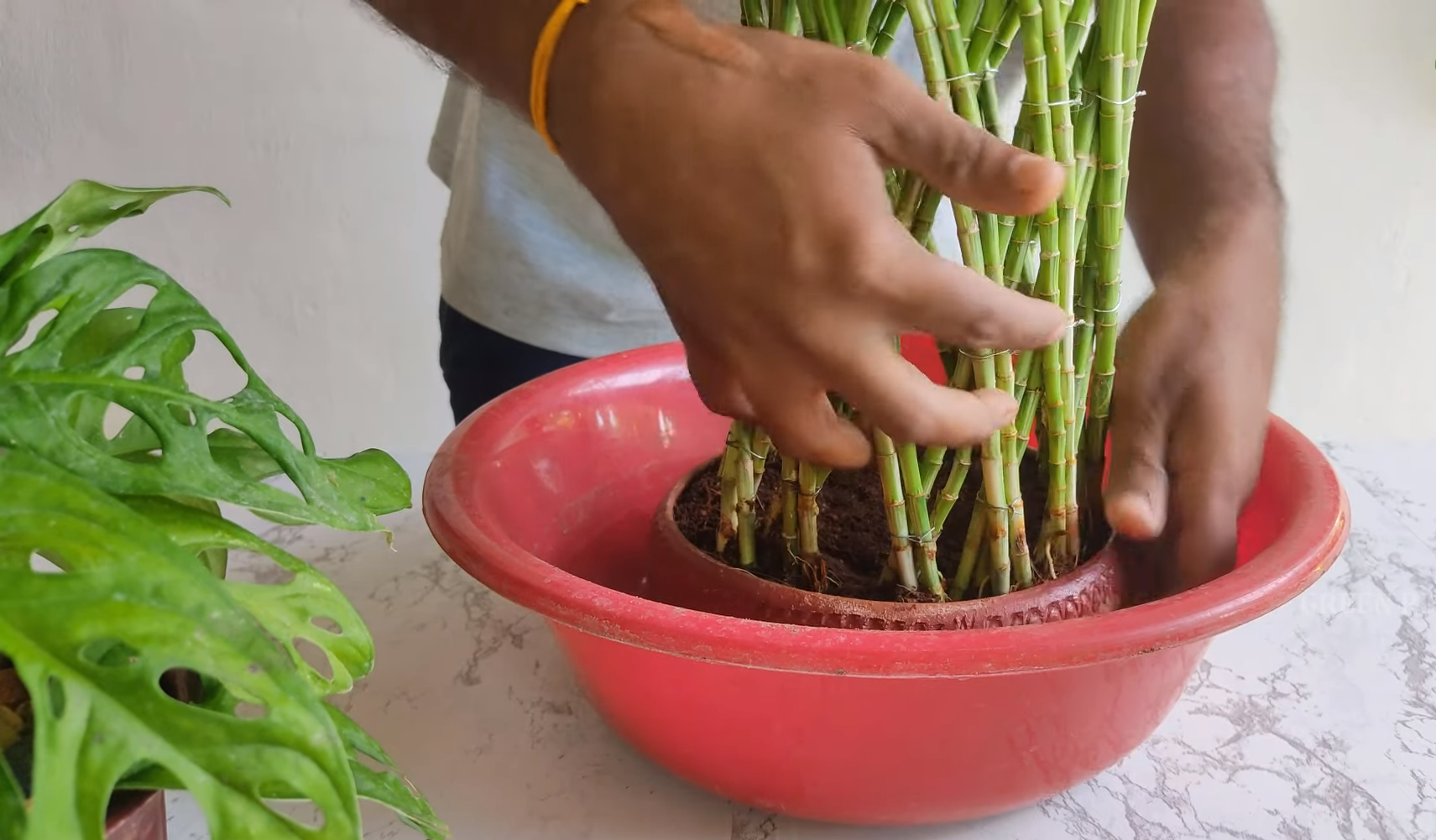
Considerations Before Planting Lucky Bamboo Outside
Before deciding to plant Lucky Bamboo outdoors, there are several key considerations to bear in mind.
- Lighting Conditions: Lucky Bamboo thrives in bright, indirect sunlight. Direct, harsh sunlight can cause the leaves to burn. Hence, choose a location that offers filtered or diffused sunlight.
- Temperature: While Lucky Bamboo is hardy, it is not frost-tolerant. It does best in warmer climates and should be protected from freezing temperatures.
- Watering: Lucky Bamboo prefers to stay moist but not overly saturated. Overwatering can lead to root rot.
- Soil: Though normally grown hydroponically, if planted in soil, it requires well-draining soil to prevent waterlogged conditions.
- Positioning: In Feng Shui principles, the placement of the Lucky Bamboo is also significant. Consider its position in relation to the flow of positive energy within your outdoor space.
- Maintenance: Regular pruning and fertilizing will help your Lucky Bamboo stay healthy and vibrant.
- Pest Control: Be mindful of typical pests like spider mites, as they can harm the plant if not promptly dealt with.
Steps to Successfully Plant Lucky Bamboo Outside
Planting Lucky Bamboo outside should be approached with thoughtful preparation and diligent care. Implementing the correct steps can ensure that your Lucky Bamboo not only survives but thrives.

Planting Timing
The best time to plant Lucky Bamboo outside is during the late spring or early summer. This timing ensures that the plant has ample time to establish its roots before the cooler months set in. The significance of planting time cannot be overstated. It plays a crucial role in ensuring the plant’s survival and growth. Plants have their own internal rhythms and growth cycles that align with the seasons. Planting Lucky Bamboo in late spring or early summer aligns with its natural growth cycle, creating an ideal environment for fostering growth. [2]
When choosing the planting day, aim for a day when the soil is moist and easy to work with, but not overly saturated. The best time of the day to plant is in the early morning or late afternoon to protect the plant from the harsh midday sun. Planting during these times reduces stress on the plant and allows it to adjust to its new environment gradually. The cooler temperatures and lower light levels during these times make the transition easier for the plant, promoting healthier growth.
Location Selection
Choosing the right location for your Lucky Bamboo plant is a critical step in the planting process. The place you select can have a direct effect on the general well-being and development of your plant. Lucky Bamboo needs indirect sunlight and does not tolerate overly cold temperatures or direct, harsh sunlight. Therefore, a location that provides filtered light and protection from extreme weather conditions is ideal.
Select a place in your garden that receives plenty of bright, indirect sunlight throughout the day. East or West-facing locations are often a good choice as they usually provide morning or late afternoon sun, respectively. Avoid areas with direct midday sun as it can scorch the leaves, leading to a weaker plant.
Do remember that while Lucky Bamboo is a hardy plant, it does best when shielded from harsh winds. Hence, a location that provides some shelter against strong winds, like near a wall or a fence, can be a good choice. By considering all these factors and carefully selecting the best location for your Lucky Bamboo, you will give it the best possible chance to grow and flourish in your garden.
Soil or Water Preparation
Soil plays a pivotal role in the health and growth of any plant, acting as a reservoir of nutrients, water, and air that plants need to thrive. It also supports the roots and serves as a medium where beneficial bacteria and fungi interact with the plant’s root system, enhancing its ability to absorb nutrients.
Choosing the right soil for your Lucky Bamboo is essential because the soil type directly affects the availability of essential nutrients. The ideal soil for Lucky Bamboo is a well-draining substrate capable of maintaining moisture levels without excessive waterlogging. Loamy soil, a balanced mix of sand, silt, and clay, is often recommended for its excellent drainage and nutrient-rich properties. This type of soil prevents water from stagnating, thereby reducing the risk of root rot—a common issue with Lucky Bamboo.
The pH level of the soil is another important factor to consider. Lucky Bamboo prefers slightly acidic to neutral pH levels, ranging from 6.1 to 6.5. [3] This range allows for optimal nutrient absorption, promoting vigorous growth and vibrant green foliage.
Planting Technique
When planting your Lucky Bamboo, follow these steps for optimal growth:
- Prepare the Pot: To avoid waterlogging, it is important to choose a pot that has sufficient drainage holes. The pot should be wide enough to comfortably accommodate the plant’s root system.
- Prepare the Soil: Fill the pot with the well-draining, loamy soil that’s been enriched with organic compost. Ensure the soil is slightly moist.
- Plant the Lucky Bamboo: Dig a hole in the soil’s center, ensuring sufficient depth to cover the roots of the Lucky Bamboo. Carefully position the plant into the hole, gently spreading its roots.
- Cover the Roots: Refill the hole, covering the roots completely with soil. Tamp down gently to remove air pockets.
- Water the Plant: Right after planting, give the pot a good watering until the excess water drains out. This will help maintain even moisture in the soil and ensure the roots are well hydrated.
- Location: Place the potted Lucky Bamboo in a spot with indirect sunlight and a constant temperature, ideally between 65 and 90 degrees Fahrenheit.
Watering and Mulching
Watering and mulching are vital to maintaining the health and longevity of your Lucky Bamboo. These activities promote a moist and nutrient-rich environment that supports vigorous growth.
Watering is a delicate balance – too little can cause the plant to wilt and too much can lead to root rot. It is recommended to maintain the soil at an even moisture level, without excessive water saturation. Watering should be done when the top layer of soil feels dry to the touch. Use room-temperature distilled or filtered water to avoid harmful chemicals found in tap water that can harm your plant.
In contrast, mulching helps with moisture retention in the soil, regulating its temperature and inhibiting weed growth. It is advisable to apply a layer of organic mulch, like compost, shredded bark, or leaf mold, spreading it evenly around the plant’s base. Ensure that the mulch does not come into contact with the stem to prevent any risk of rot.
Caring for Outdoor Lucky Bamboo
Tips and Lifehacks for Caring for Outdoor Lucky Bamboo
- Rotate your plant: For achieving uniform growth, it is recommended to periodically rotate your Lucky Bamboo plant. This enables the plant to receive balanced light exposure and promotes symmetrical growth.
- Clean the leaves: Dust and other particles can accumulate on the leaves, hindering photosynthesis. Wipe the leaves gently with a moist cloth once every week to keep them clean and healthy.
- Trim regularly: Trimming helps maintain the size and shape of your flowers. Utilize sharp and clean shears for trimming yellow or brown leaves, as well as controlling the plant’s size.
- Monitor for pests and diseases: Periodically examine the plant for indications of pests like spider mites or scale insects, or diseases such as leaf spot or root rot. Early detection and treatment are crucial to prevent spread and maintain plant health.
- Winter care: In colder climates, protect your Lucky Bamboo from frost by bringing it indoors or providing adequate insulation outdoors during harsh winters.
Decorative Ideas for Home and Garden
Lucky Bamboo makes for a versatile decorative element, whether indoors or outdoors, owing to its minimalistic elegance and vibrant green hues. Here are some creative ideas to incorporate Lucky Bamboo in your home and garden décor:
- Water Fountain Centerpiece: Place a tall Lucky Bamboo stalk in the center of a water fountain to create an eye-catching centerpiece. The flowing water adds to the serene aura of the bamboo, evoking a sense of tranquility.
- Mini Bamboo Forest: Group several Lucky Bamboo plants of varying heights together to create a small, enchanting bamboo forest. This can serve as a unique focal point in your living room or patio.
- Layered Bamboo Shelf: Use a multi-level shelf to arrange your plants in a cascading effect. Each shelf can feature plants of different heights to create a dynamic, visually interesting display.
- Bamboo in Glass: Showcase your Lucky Bamboo in clear glass vases filled with colored stones or marbles. This highlights the plant’s intricate root system, giving it a modern, artistic touch while adding a splash of color.
- Hanging Bamboo: Hang Lucky Bamboo plants in stylish planters from your porch ceiling or pergola. This not only saves ground space but also adds an element of surprise to your outdoor decor.
- Tabletop Arrangements: Use Lucky Bamboo for unique tabletop arrangements. Place a single stalk in a sleek vase for a minimalist look, or group several together for a more lush, vibrant centerpiece.
- Bamboo Pathway: Line your garden pathway with Lucky Bamboo to create a peaceful, inviting walkway. The tall, slender stalks create a striking contrast against the wider landscape, drawing the eye and guiding visitors through your garden.
- Bamboo Wall: Create a bamboo wall by grouping several tall Lucky Bamboo stalks together. This can serve as a natural screen that provides privacy while also adding a touch of greenery to your space.
Each of these ideas can be customized according to your personal style and the existing décor of your home or garden. Experiment with different settings and arrangements until you find the one that best suits your Lucky Bamboo and your space.
Frequently Asked Questions
Where is the best place to plant lucky bamboo?
Lucky Bamboo thrives best in bright, filtered sunlight. It’s an excellent indoor plant that does well in an east or west-facing window. However, it can grow in darker spots if needed. The plant prefers to be kept in water but can also grow in soil. It’s important to keep the water or soil fresh to prevent the roots from rotting. Remember, despite its hardy nature, avoid placing Lucky Bamboo in direct sunlight as it can scorch the leaves.
How do you increase lucky bamboo growth?
To stimulate Lucky Bamboo growth, ensure that it is receiving appropriate light and water. Regular feeding with a diluted houseplant fertilizer can also be beneficial. Pruning is another effective strategy; trimming the top of the main stalk will encourage the growth of side shoots. Additionally, maintaining a warm room temperature (around 65-95°F or 18-35°C) can promote faster growth. Remember to refresh the water every couple of weeks (if grown in water) or ensure the soil is well-drained (if grown in soil) to prevent root rot.
Should I keep lucky bamboo in water or soil?
Lucky Bamboo can be grown in either water or soil, and both methods have their own benefits. If you prefer a low-maintenance approach, growing the plant in water is a good choice. Ensure that the roots are fully submerged and the water is changed every two weeks to prevent rotting. On the other hand, growing Lucky Bamboo in soil can provide more stability for taller plants. If you choose this method, make sure the soil is well-drained and remains consistently moist but not waterlogged. Regardless of the method you choose, remember that Lucky Bamboo prefers indirect sunlight and moderate temperatures.
Can lucky bamboo get direct sunlight?
No, Lucky Bamboo should not be placed in direct sunlight as it can cause damage to the plant. While it can tolerate bright light, it prefers conditions with indirect sunlight. Direct sunlight can scorch the leaves of the plant, leading to yellowing and possible wilting. Therefore, it’s recommended to place your Lucky Bamboo in a bright location, but out of direct sun, for optimal growth.
Useful Video: Lucky Bamboo Care and Propagation for Beginners
Conclusion
To wrap it up, lucky bamboo can be planted outside and adds a decorative element to any outdoor space. Its popularity has grown in recent years due to its low maintenance needs and stunning look. Furthermore, the energy and protection that the bamboo stalks are once believed to provide can bring overall positivity into many outdoor spaces while also providing an aesthetic appeal. If you are looking for a vibrant way to add life to your garden or patio, look no further than a few lucky bamboo plants! Who knows? You might even get some luck along with them! Make sure you research how to properly care for the outdoors before attempting to cultivate and grow lucky bamboo plants in your environment. With the right conditions, time, and care – you’ll be able to reap all of the benefits that come with adding decorations of Lucky Bamboo outside!
References:
- https://www.gruhapraveshinteriors.com/lucky-bamboo-houseplant/
- https://www.bambooland.com.au/growing-guides/planting-and-growing-bamboo/
- https://www.petalrepublic.com/best-soil-for-lucky-bamboo-plants/





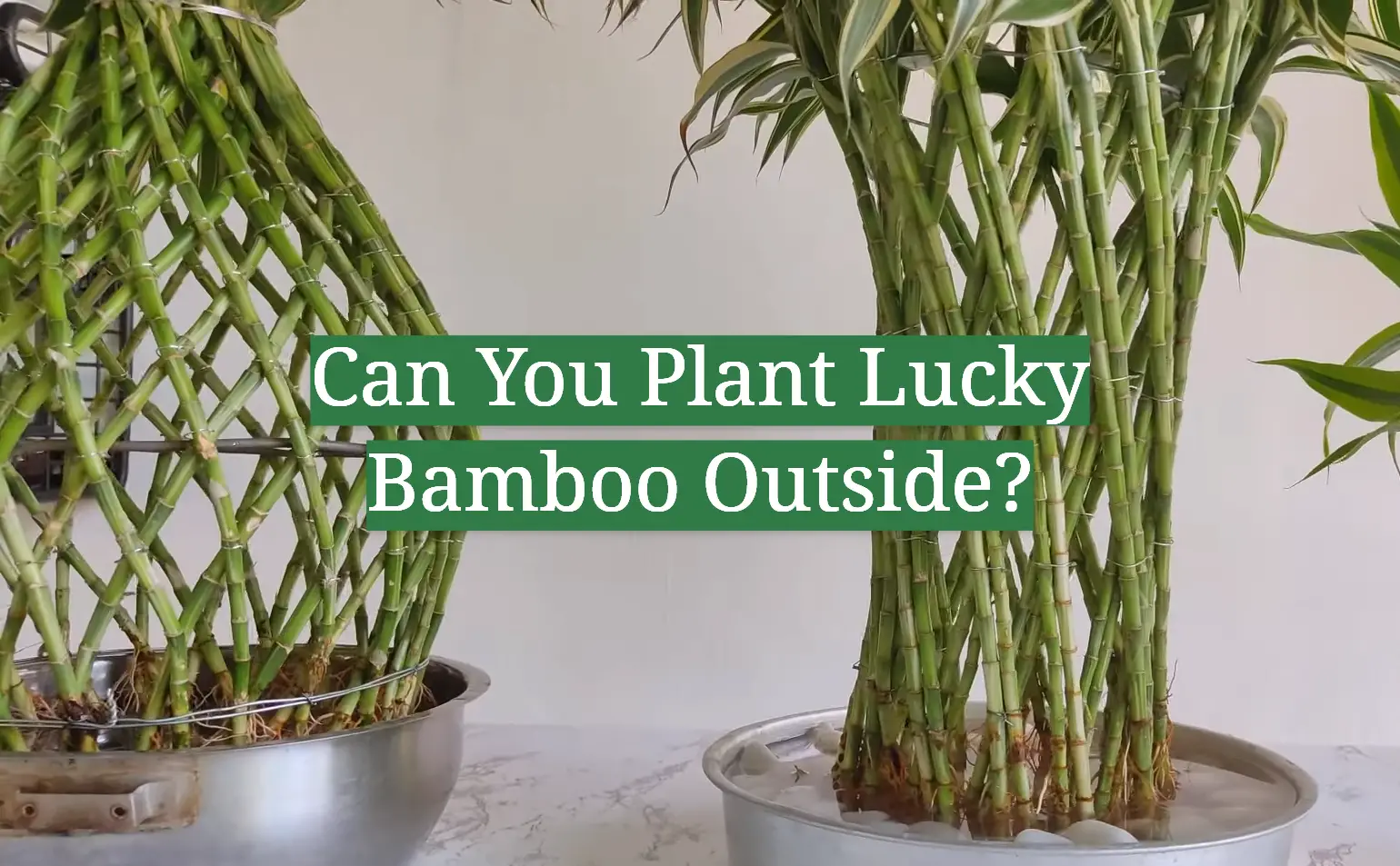
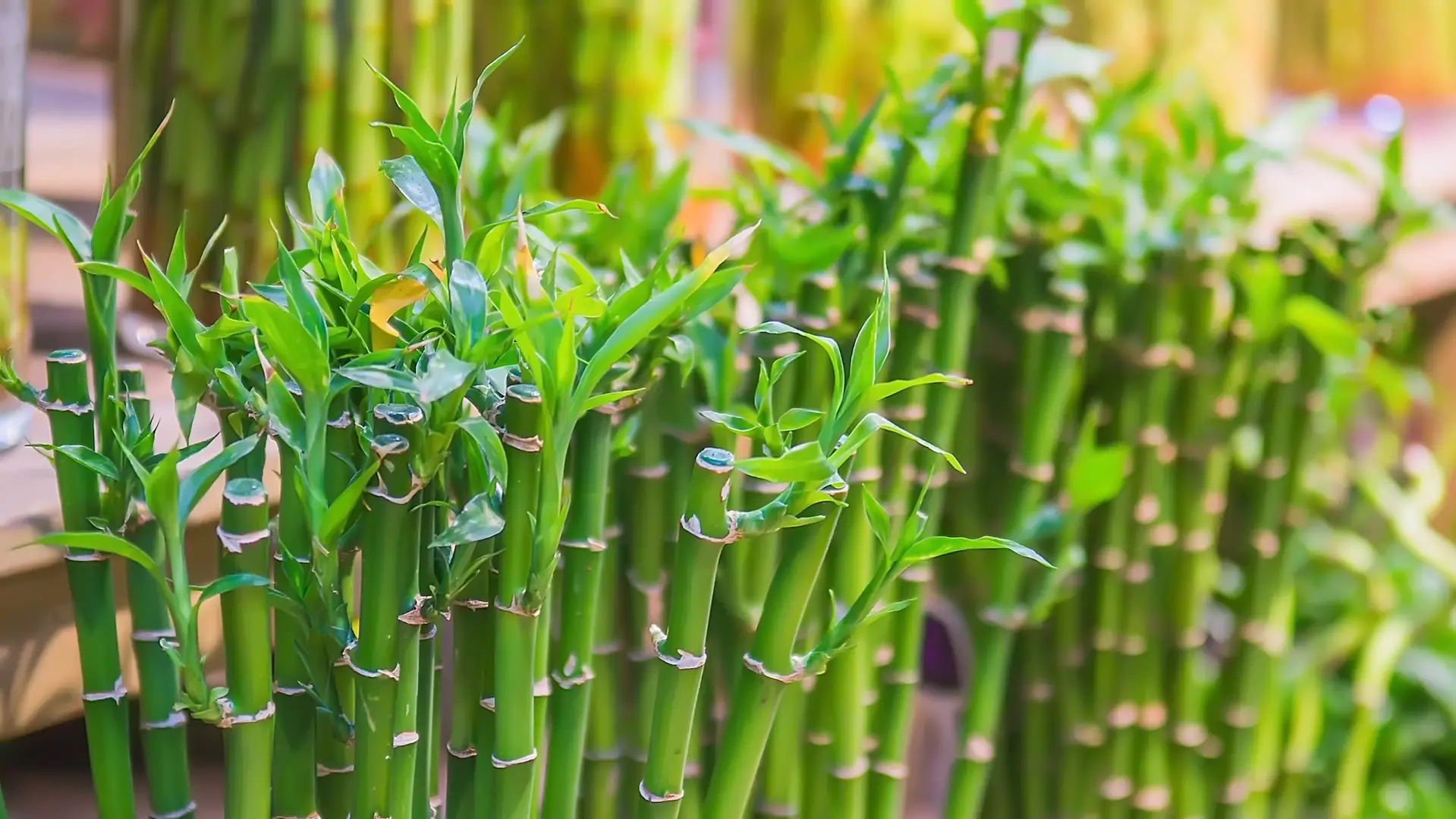
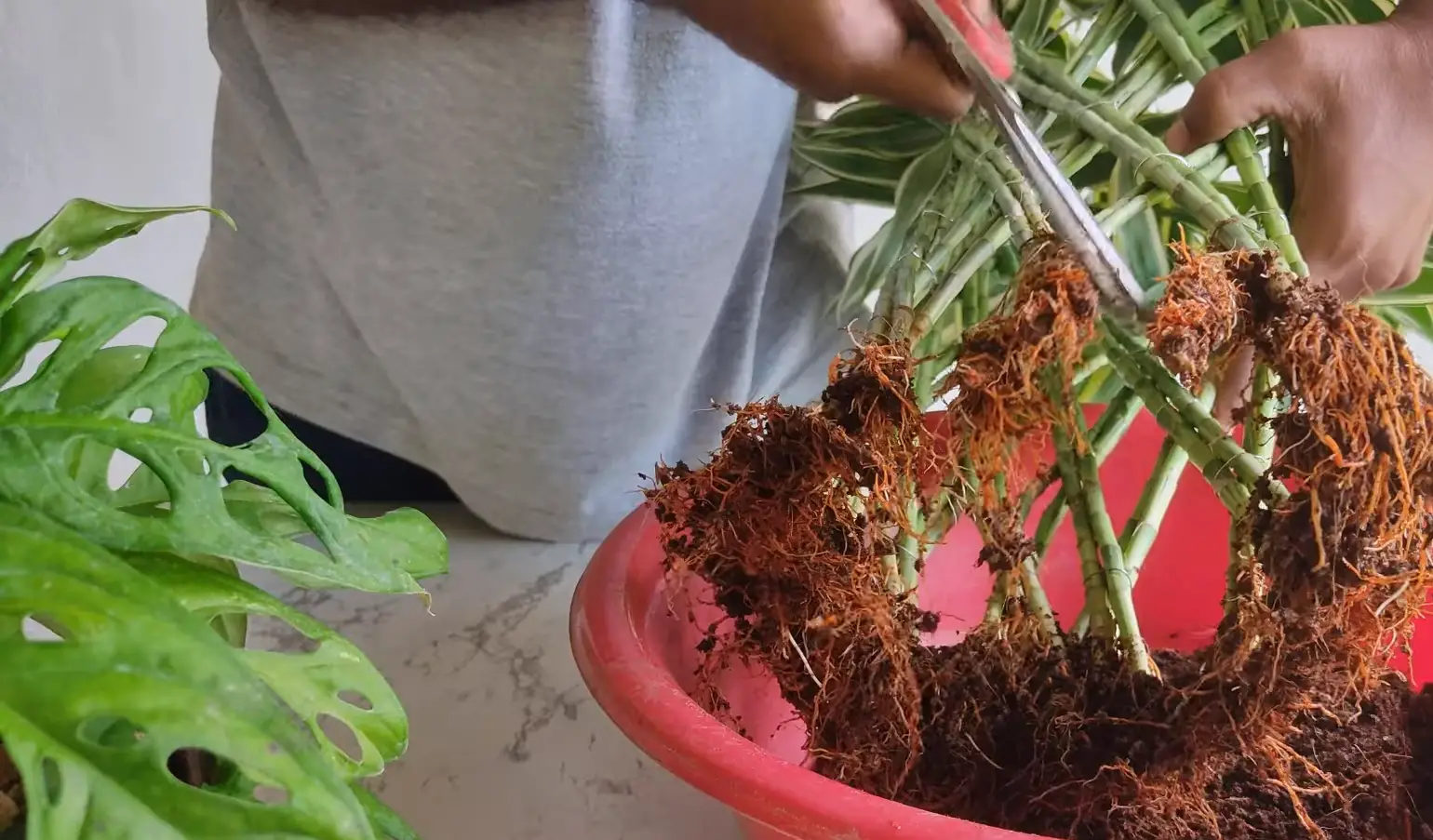
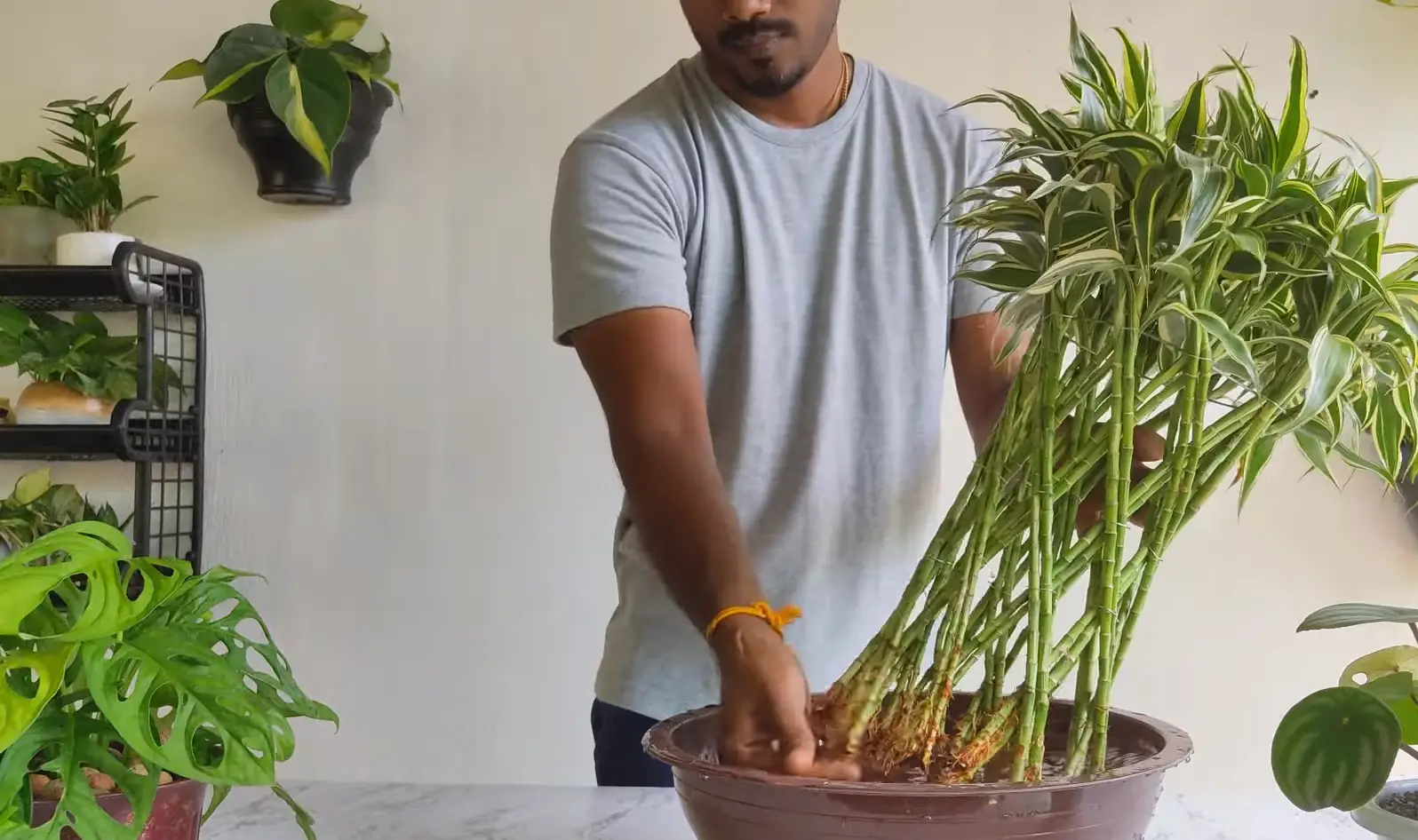

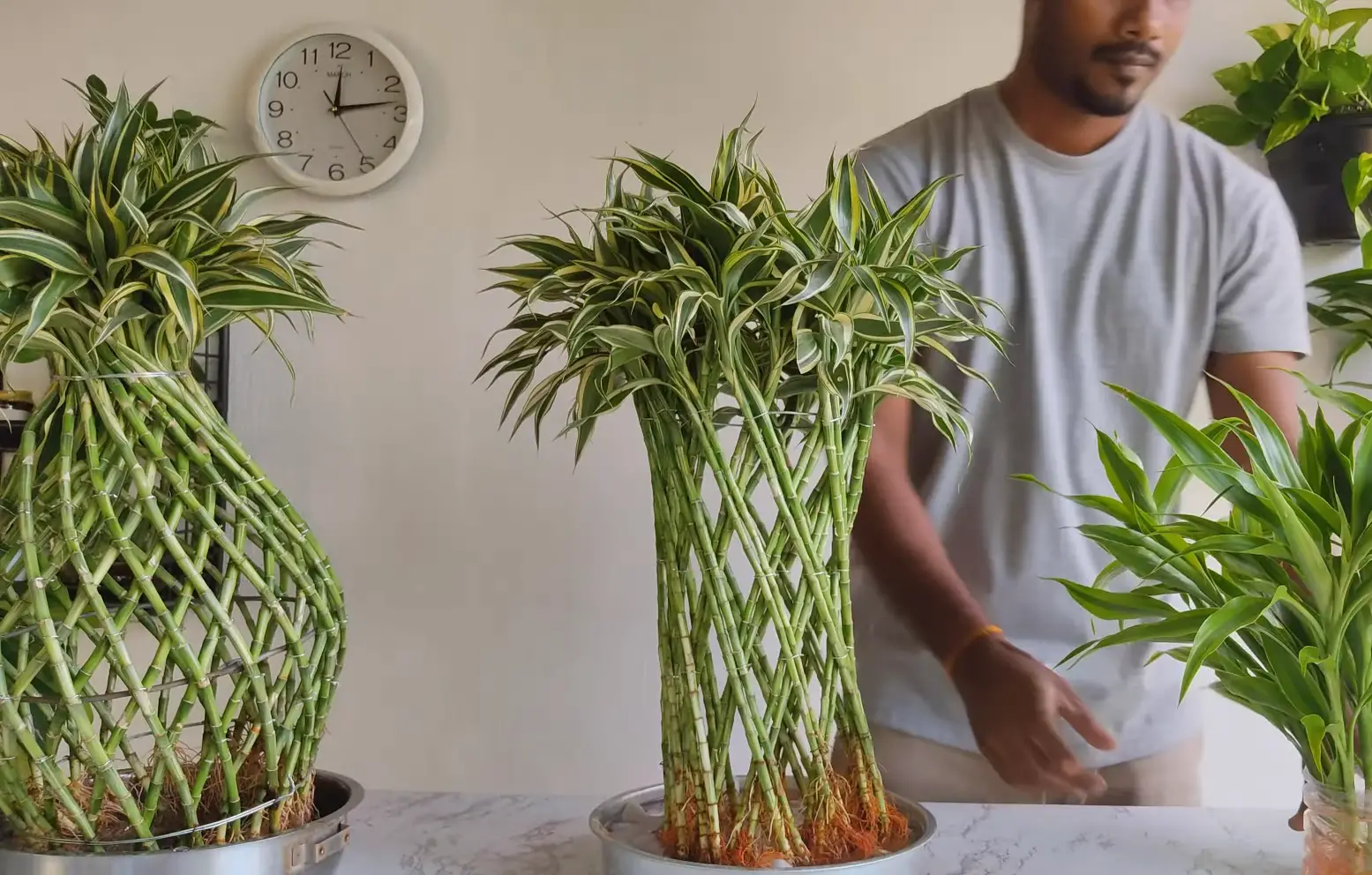




Leave a Reply
View Comments